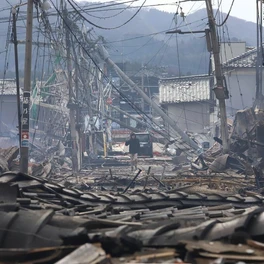Recent studies suggest that the destruction of old magma may have contributed to the Noto Earthquake in Japan. Scientists are examining the geological details, investigating the connection between demolished ancient magma and the quake's seismic activity. Their findings could potentially provide a more in-depth understanding of earthquake mechanisms and aid in the development of effective preventive measures.
Earthquakes are a part of life in Japan due to the country's location in the Ring of Fire. Citizens often face their consequences and manage daily life accordingly, giving utmost importance to the research, prevention, and safety measures against earthquakes. Any breakthroughs in understanding their causations and mechanisms are thus of high public interest.
Like Japan, similar issues are also faced in parts of the US (like California) and the EU (Italy, Greece), where regular earthquakes occur. Science and research about earthquakes are held in high regard in these regions. However, compared to Japan, building codes and prevention measures might be less stringent.

